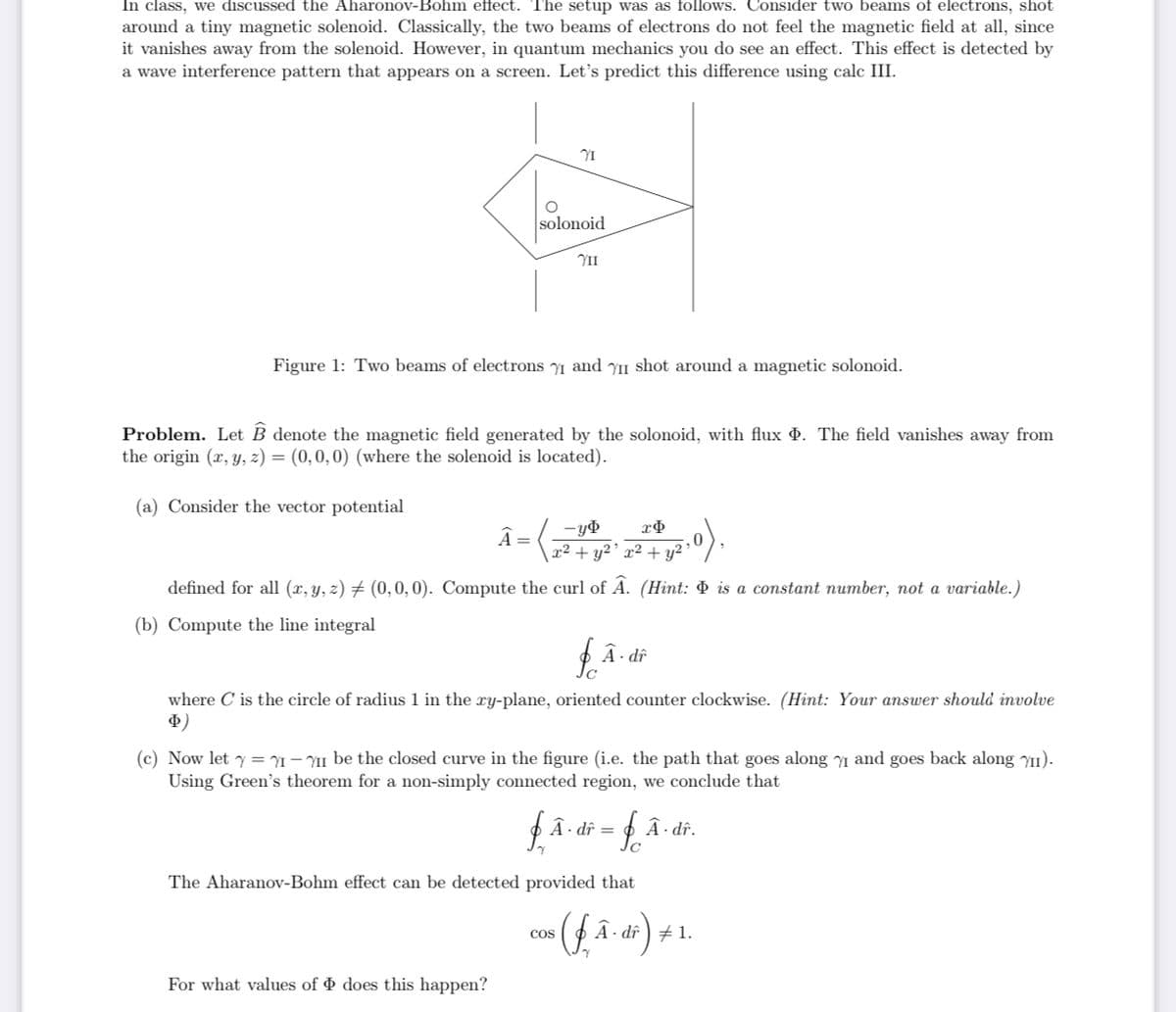Problem. Let B denote the magnetic field generated by the solonoid, with flux . The field vanishes away from the origin (r, y, z) = (0,0,0) (where the solenoid is located). (a) Consider the vector potential -y x2 + y2' x2 + y? (). defined for all (x, y, z) # (0,0, 0). Compute the curl of A. (Hint: is a constant number, not a variable.)
Problem. Let B denote the magnetic field generated by the solonoid, with flux . The field vanishes away from the origin (r, y, z) = (0,0,0) (where the solenoid is located). (a) Consider the vector potential -y x2 + y2' x2 + y? (). defined for all (x, y, z) # (0,0, 0). Compute the curl of A. (Hint: is a constant number, not a variable.)
Trigonometry (MindTap Course List)
10th Edition
ISBN:9781337278461
Author:Ron Larson
Publisher:Ron Larson
Chapter6: Topics In Analytic Geometry
Section6.4: Hyperbolas
Problem 5ECP: Repeat Example 5 when microphone A receives the sound 4 seconds before microphone B.
Related questions
Question
This not a physics question! It's a calculus / advance math question

Transcribed Image Text:In class, we discussed the Aharonov-Bohm effect. The setup was as follows. Consider two beams of electrons, shot
around a tiny magnetic solenoid. Classically, the two beams of electrons do not feel the magnetic field at all, since
it vanishes away from the solenoid. However, in quantum mechanics you do see an effect. This effect is detected by
a wave interference pattern that appears on a screen. Let's predict this difference using calc III.
solonoid
II
Figure 1: Two beams of electrons y1 and yII shot around a magnetic solonoid.
Problem. Let B denote the magnetic field generated by the solonoid, with flux . The field vanishes away from
the origin (x, y, z) = (0,0,0) (where the solenoid is located).
(a) Consider the vector potential
().
Â=
x² + y2' x² + y²
defined for all (x, y, z) # (0,0, 0). Compute the curl of A. (Hint: & is a comstant number, not a variable.)
(b) Compute the line integral
A- dî
where C is the circle of radius 1 in the xy-plane, oriented counter clockwise. (Hint: Your answer should involve
Ф)
(c) Now let y = Y1 – YII be the closed curve in the figure (i.e. the path that goes along Y1 and goes back along Y1).
Using Green's theorem for a non-simply connected region, we conclude that
A · dî =
 · dî.
The Aharanov-Bohm effect can be detected provided that
Cos
A · dî ) + 1.
For what values of & does this happen?
Expert Solution
This question has been solved!
Explore an expertly crafted, step-by-step solution for a thorough understanding of key concepts.
Step by step
Solved in 4 steps

Knowledge Booster
Learn more about
Need a deep-dive on the concept behind this application? Look no further. Learn more about this topic, advanced-math and related others by exploring similar questions and additional content below.Recommended textbooks for you

Trigonometry (MindTap Course List)
Trigonometry
ISBN:
9781337278461
Author:
Ron Larson
Publisher:
Cengage Learning

Trigonometry (MindTap Course List)
Trigonometry
ISBN:
9781337278461
Author:
Ron Larson
Publisher:
Cengage Learning